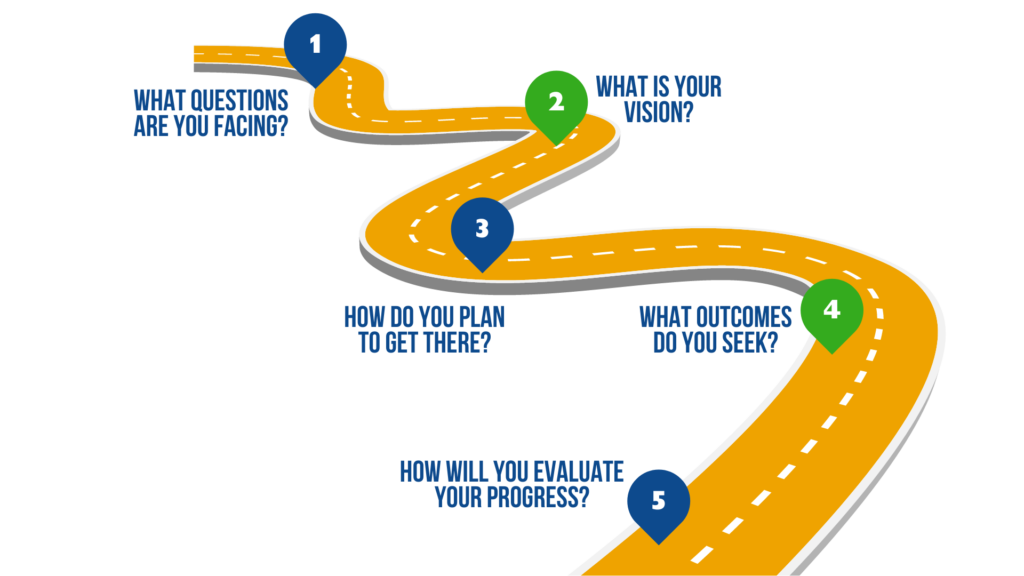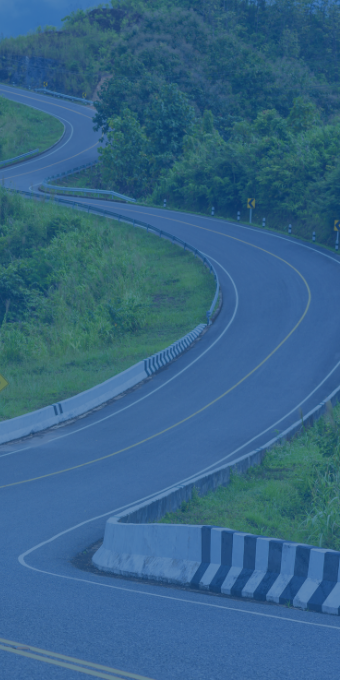Theory of Change or a Logic Model?
Nonprofit organizations succeed when there is a clear roadmap to guide the organization – a roadmap which will answer the following questions: what questions are you facing, what is your vision, how do you plan to get there, what outcomes do you seek, and how will you evaluate your progress? One important tool to use when futurizing your organization is a theory of change model, and its close sibling – the logic model.

Theory of Change
According to the United Nations Development Group, “a theory of change is a method that explains how a given intervention, or set of interventions, are expected to lead to a specific development change, drawing on a causal analysis based on available evidence.”[1] Additionally, a theory of change can also be defined, according to Reinholz & Andrews, 2020, as making “the underlying rationale of a project explicit, which supports planning, implementation, and assessment of the project.”[2] Simply put, a theory of change is just that – a theory about how a project or program will create lasting change. The purpose of a theory of change is to show the “how” – what program or project is being implemented and why? What is the intended outcome? What will be the long-term impact? It’s also a tool for measuring accountability and can keep an organization aware of any challenges which might affect the desired change. A theory of change typically has the following elements, but can include others:
- Current conditions, or the issue at hand
- Assumptions and context
- Activities
- Immediate outcomes
- Long term outcomes/impact
Theories of change can also be foundational in creating pathways for systems change and collaborating with others in the network, because, according to Geneva Global (2018), “once the theory is clearly articulated, it becomes much easier to identify the possibilities for shared action with fellow collaborators.”[3]
A typical theory of change might include the following elements:

Theories of change are also useful for grantmaking opportunities, as funders often want to see these models in an application for funding as examples of how evaluation processes will be executed.
Logic Model
Another way to track activities and outcomes is a logic model. While some might use the two interchangeably, they are actually quite different. While a theory of change looks at the broader connection between programming and outcomes, a logic model “help define a program’s intended impact and goals; the sequence of intended effects; which activities are to produce which effect; and where to focus outcome and process evaluations.”[4] Why would someone use a logic model? The Kellogg Foundation (2004) describes its purpose as a way “to provide stakeholders with a road map describing the sequence of related events connecting the need for the planned program with the program’s desired results. Mapping a proposed program helps you visualize and understand how human and financial investments can contribute to achieving your intended program goals and can lead to program improvements.”[5] Essentially, a theory of change provides the roadmap, the logic models outlines the steps.
Logic models typically include the below elements:

As seen above, a logic model is a much more comprehensive approach than a theory of change. Additionally, theories of change, as mentioned earlier, are great tools for external communication and branding purposes, and can often be published on websites, brochures, and other materials so that members of the community can understand the links between programming and outcomes. However, logic models are integral tools for internal purposes, and often help teams further understand the activities and direct resources needed to be able to implement specific strategies. When used by specific organizations, the logic models can also include detail such as which department is leading on a specific activity, and what person in particular will be accountable for that work. This can ensure that all objectives are SMART – specific, measurable, attainable, realistic, and time-bound.
The use of a theory of change and subsequently, a more detailed logic model, is an integral part of organizational leadership, planning, and evaluation. By connecting programming to outcomes, organizations can communicate to external partners, funders, and the community, while also holding themselves accountable internally for the work it sets out to do. If your organization is embarking on a journey of futurizing and you need some help along the way, reach out to us at info@lapiana.org.
Madison is currently completing her Doctorate of Ministry in Social Transformation, this is an excerpt from McAleese’s piece on theories of change at the United Theological Seminary of the Twin Cities.
[1] Group, U. N. (n.d.). Theory of Change. UNDG.
[2] Reinholz, D. L., & Andrews, T. C. (2020). Change of Theory and Theory of Change: What’s the Difference Anyway? International Journal of Stem Education, 1-2.
[3] Why Your Theory of Change is Critical to Your Organization’s Impact. (2018, July 10). Retrieved from Geneva Global: https://www.genevaglobal.com/blog/why-your-theory-of-change-is-critical-to-your-organizationsimpact#:~:text=The%20theory%20of%20change%20can,a%20framework%20for%20decision%2Dmaking.
[4] Bureau, D. o. (n.d.). Logic Model Tip Sheet. Department of Health and Human Services.
[5] W.K. Kellogg Foundation (2004). Using logic models to bring together planning, evaluation, and action: Logic model development guide. Battle Creek, Michigan: W.K. Kellogg Foundation.


There is increasing attention to ToC and it is often contrasted to the Logical Framework (LFA) and/or the Logic Model. The LFA is often criticized for the fact that the relationships between the problems and solutions should not be rigid and that ToC by emphasising pathways, rather than relying on the one-to-one problem to objectives logic underpinning the LFA is somehow superior
What I generally miss in the discussion is the fact that the LFA is the end product of an analysis, starting with a thorough participative problem analysis involving a good set of stakeholders, followed by an objectives analysis. I believe that a lot of the negative views on LFA, are the result of not devoting sufficient time and resources to undertaking a sound problem analysis.
Absolutely Jan, we agree. We like using logic models following a full process that includes stakeholder participation and discussion, leading to concrete objectives and goals. Theories of change are helpful in understanding those pathways, but also don’t provide the tangible steps toward connecting objectives and goals.